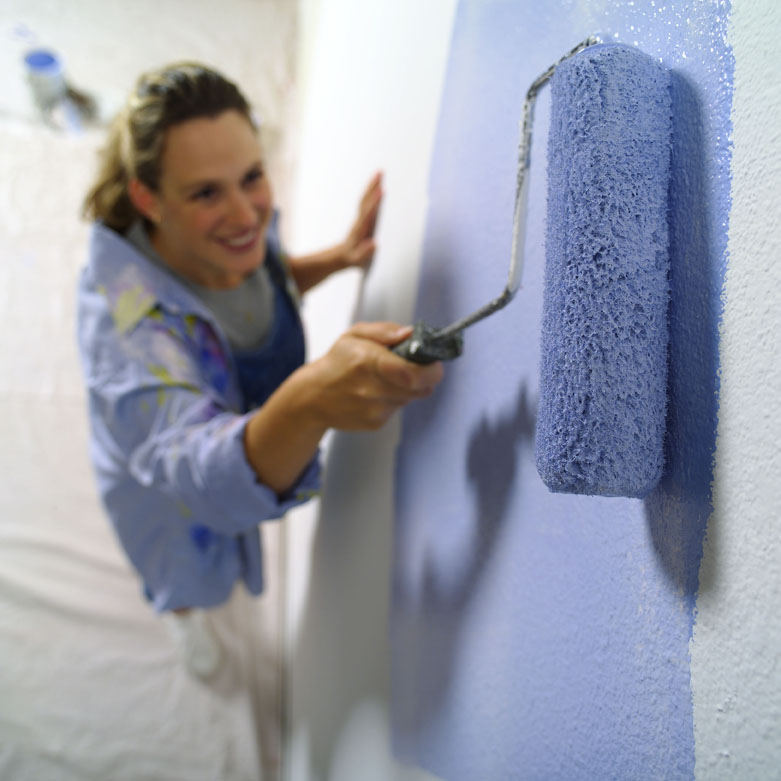The Reality of Home Improvement: HGTV Installment

On any given weekend in my house, at least a couple of hours will be spent watching the designers, craftspeople and entertainers on HGTV or its spunky sister station, the DIY Network. The premise of these home-centered television networks is that somewhere, sandwiched between long commercial breaks for paint, faucets, flooring warehouses and something called “Slab Jacking”, you’ll find programming about real people making real decisions about their homes. Sometimes those decisions are about buying a home, while other times they may be about selling or remodeling a home. In all of the situations, experts are brought in to help and a camera crew just happens to tag along, so the rest of us can enjoy the unfolding drama from the comfort of our couches.
Home improvement programming has been around for a long time and is generally considered reality TV, but a lot of the real life is lost between cuts. Here’s a quick guide of some of the more popular programs.
House Hunters – The formula is simple but always entertaining. Each episode begins with someone unhappy with their living situation, so they call an agent and look at 3 properties. After weighing the options, a home is chosen. Of course, this show is over-simplified and leaves out the long weekends the buyer spends in their agent’s car driving from listing to listing. What you do get is a sense of home values and styles in different regions, the humor of buyers’ reactions to homes, and the excitement new home owners feel as they take the keys to their dream home. You rarely get the type of tension home shopping can bring. The big climax of the show is when an offer is made: the narrator might say something like, “Though their offer was rejected the first time around, the other buyer ultimately backed out and they ended up getting the house for X amount.” But I don’t think they usually talk about it at all. For that kind of tension, you need to check out Property Virgins. The best part of the half hour happens in the last 30 seconds when you see how the new owner redecorates the home in their own style.
Property Virgins– Similar premise to House Hunters, except these first-time homebuyers walk through the basics. The best part about the show is the excitement (and sometimes clumsiness) of the virgin house-hunters. The worst part of this show is when would be homebuyers have unrealistic expectations for their first home.
House Hunters International – Comparable to House Hunters but everyone has accents and the kitchens are shockingly small.
Designed to Sell – Did you know that your spare bedroom filled with Grandpa’s taxidermy and the vintage 1950’s kitchen can be a turn-off to potential buyers? Valuable lessons like these are a just a few of the gems I’ve picked up on Designed to Sell. Each episode features a home which has been racking up days on the market but no one is interested in buying. That’s where the army of carpenters and designers step in. When they’re done, the house that looked like Grandma’s musty basement now looks like the lobby of a hip hotel, and they only spent a few hundred dollars. I love this program for the inspiration but find it short on reality. The listed prices of these improvements don’t seem realistic, and I often wonder if the costs include the lifetime of carpentry skills, design training, garage filled with power tools and time required to do the job. If you are looking for design ideas and hope for a home that isn’t attracting buyers, you’ll find some great ideas here, but take the true cost of those improvements with a grain of salt.
Real Estate Intervention – Being a real estate agent takes a lot of diplomacy, and this is never more important than that moment they suggest a market-friendly price to a home seller. On Real Estate Intervention, that diplomacy generally fails, sellers are unrealistic, and a stern man with a menacing mustache steps in for an intervention. He dishes out tough love to the seller and paints a clear picture of market reality. In a half hour he is able to change minds and make the seller feel good about the decision they made.
This Old House – This PBS staple wrote the book on home improvement programming. With TOHyou’ll trade commercials for pledge drives, but you’ll also get a more cerebral home improvement viewing experience. TOH does take patience, as it takes a full season to complete a home improvement project instead of 30 minutes on other programs. If you are looking for the same quality instruction in a more digestible format, you can check out the spin off, Ask This Old House.
Be warned that the home improvement bug often bites soon after watching any of these programs. After a long HGTV bender, I find myself wandering through the paint sample aisle and making trips to home improvement stores that aren’t on my way home from the office. Sometimes life does imitate art and the voice in the back of my head keeps saying, “They make it look so easy.”
What about you? Do you find home-improvement shows useful or do you think they set unrealistic expectations? What are your favorite home-improvement resources?
by Justin Waskow
Divorce, Custody, and Employee Mobility

Divorce, child custody and relocation are all difficult topics however, knowing the facts will help you make the decisions that are right for you and your family. Below you will find an excerpt from an article recently published in Mobility Magazine by Windermere’s own Peggy Scott, GRI, CRP, GMS. She is the relocation director and designated broker for Windermere Relocation and Referral Services, Seattle, WA. You can read the article in its entirety here: http://bit.ly/9PrKxL

“As society becomes increasingly mobile, so does the frequency with which global mobility professionals encounter relocation cases involving child custody. Scott defines custody, discusses its effects on mobility, and offers a case study demonstrating how divorce affects the relocation process.”
While the divorce rate varies greatly in each country of the world, affecting the lives of men and women, those with children be affected the greatest. No family law generates more concern, strife, and emotional turmoil than child custody and visitation matters. Every court around the nation will advocate for the best interest of the children involved in divorce.
Developing an amicable parenting plan or agreement for the interests of the children is the best solution to establishing custody of a child. The best interest of the child is served by a parenting arrangement that best maintains a child’s emotional growth, health and stability, and physical care. According to Washington state law, the best interest of the child ordinarily is served when the existing pattern of interaction between a parent and child is altered only to the extent necessitated by the changed relationship of the parents.
If the parents cannot reach an agreement concerning the custody and parenting plan for the child, then the court may establish either sole or mutual decision-making authority as well as residential provisions. The parenting plan or agreement needs to support, in detail, the child’s best interest in the areas of school, physical care, traveling expenses, individual parental authority, and residence options and rules. All divorce cases involving child custody, whither uncontested or contested, must include a parenting plan or custody order (either by agreement or ordered after trial) that is adopted by the courts.
To read the rest go here: http://bit.ly/9PrKxL
The First Decade
Posted by Geoff Wood
The other day I was searching for my daughter’s cell phone number – which I haven’t memorized because I simply speed-dial it – and I realized it’s been years since I memorized anyone’s phone number. And this was just after I’d booked a flight online and selected my seat, and downloaded some new music into my iPod.
It occurred to me that these are just three examples of the tremendous changes that have happened just since the new millennium began. At the beginning of this decade, iTunes, YouTube and Facebook did not exist. Today, their combined daily views and downloads are in the billions.
An article in Newsweek a few months ago highlighted how much things have changed in a decade. The numbers are staggering and surprising.
-
- Ten years ago, a total of 400,000 text messages were sent per day; today 4.5 billion are zinging through cyberspace every day.
-
- In 2000, 12 billion emails were sent each day; today 247 billion are sent daily (many of which were in my spam filter this morning).
-
- Ten years ago, about 208 billion letters were mailed through the postal system each day; today the number of letters mailed daily is less than 176 billion.
This decade has been tumultuous, to say the least. Beyond the tremendous technology-driven advances, we are still struggling with this economy. Unemployment rates are too high. Banks are still struggling. And it is heartbreaking that people have lost their homes.
Even though there is a lot of uncertainty, I remain optimistic. I am realistic enough to know that this recovery will take awhile. But recover we will.
One thing that hasn’t changed in the past decade is the resiliency of real estate over time. When you look at median single-family home prices ten years ago versus this year, you’ll see that home values have increased since 2000. This is encouraging, especially when you consider that the stock market today is the same place it was 10 years ago. For most people, their home is worth more today than when they bought it. It might be worth less than it was two or three years ago, but real estate has never been about day trading. It’s a long-term investment. And if the last 10 years, or 100 years, are any indication, we can count on growth in home values.
And that’s a good thing.
July Median Home Prices*
2000
2010
National
$151,100
$182,600
*Source: NWMLS
What are some of the most memorable changes for you in the past decade?
 Facebook
Facebook
 Twitter
Twitter
 Pinterest
Pinterest
 Copy Link
Copy Link
